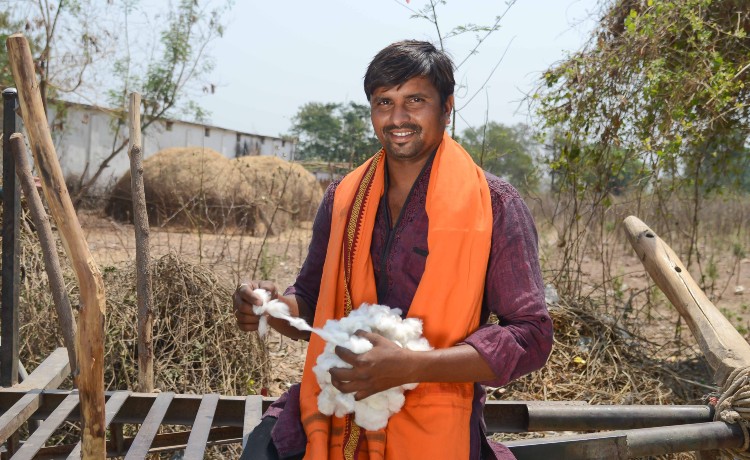India is the
largest cotton producer in the world, with 5. 8 million farmers making a living
from the crop, along with millions of people who work in the sector. But in the past the industry has had a bad
name, labelled as one that ‘consumes too much and produces too little’ – too
much water, too much pesticide, and low productivity per hectare.
“But all that is
changing,” says Jyoti Kapoor, Country Director of Better Cotton in India. With the global demand for more sustainable
cotton at an all-time high, Better Cotton is working with approximately
1 million farmers in India to tackle
sustainability issues within the industry - and make it more profitable for
farmers too.
“We have a vision
for a more sustainable world, where cotton farmers and their workers know how
to cope – with climate change, threats to the environment and yes, even global
pandemics.” She said.
But whilst there
is a long way to go to blanket the mammoth industry, Better Cotton’s current strategy
has a clear focus – the need to increase quality. “In the past decade we were focusing on scale
as well as quality, but today that growth is organic, and so we are now fully
focused on quality.” Jyoti said.
With the value of cotton reliant on both the quality and efficiency of the yarn that can be produced from it, quality is a key consideration for all stakeholders, with Better Cotton working across the supply chain to address this issue. And farmers here have a key role to play – ensuring they harvest, manage and store seed cotton in a way that minimises trash, contamination and damage. But of course, higher quality cotton leads to better prices, so in the end it is worth it.
The
small landholder cotton farmer in India, struggles under the weight of myriad
challenges. “Unfortunately from the farmer perspective, the industry has grown
more complex over the last decade.” Jyoti said.
“The need for traceability is now there, with buyers wanting to be able
to track the amount of Better Cotton all along the supply chain.”
“Our
role is to work with farmers and help them navigate these challenges better –
after all our aim is to help cotton communities thrive, whilst protecting and
restoring the environment at the same time.” She said.
And
partners, like Ambuja Cement Foundation, play a crucial role in bringing that
vision to life. With ACF working with 17.36%
(1.72lakh farmers) of Better Cotton’s total farmers in India
“Our
19 partners play a very important role as they are our
support for scale, and are the ones providing opportunities to improve farmer
practices.” Ms Kapoor said.
“The beauty of partners is that they have strong understanding of the
local situation on ground. Our partners all come from different backgrounds,
each bringing specialist skills and knowledge to the table, which is very
important to us.”
“In fact, ACF is one of the partners working across all 5 Better Cotton
Impact Target areas – climate change mitigation, soil health, pesticide use,
smallholder livelihoods and women’s empowerment.” Jyoti said.
If the 2019-20 Impact and Farmer Results Report are anything to go by,
the future of Better Cotton, and indeed the cotton industry as a whole, bodes
well. With a 10%
reduction in water usage, 23% fewer chemical pesticides, and 13% reduction in
use of synthetic fertilizers, Better Cotton farmers are seeing 9% higher yields
and 18% higher profits.
“ACF is one of our leading partners and they have been extremely instrumental in achieving the impact we have seen. We are very proud of our relationship – it’s a wonderful partnership.” Jyoti said.
“Our whole team relies on partners such as ACF for their expertise and its in-depth knowledge in the field. Working with Programme Partners such as ACF has increased farmer numbers quite substantially, and we are currently doing some hot spot analysis to identify key areas where we might need further support.” She said.

Jyoti Kapoor, Country Director, Better Cotton in India







0 Comment